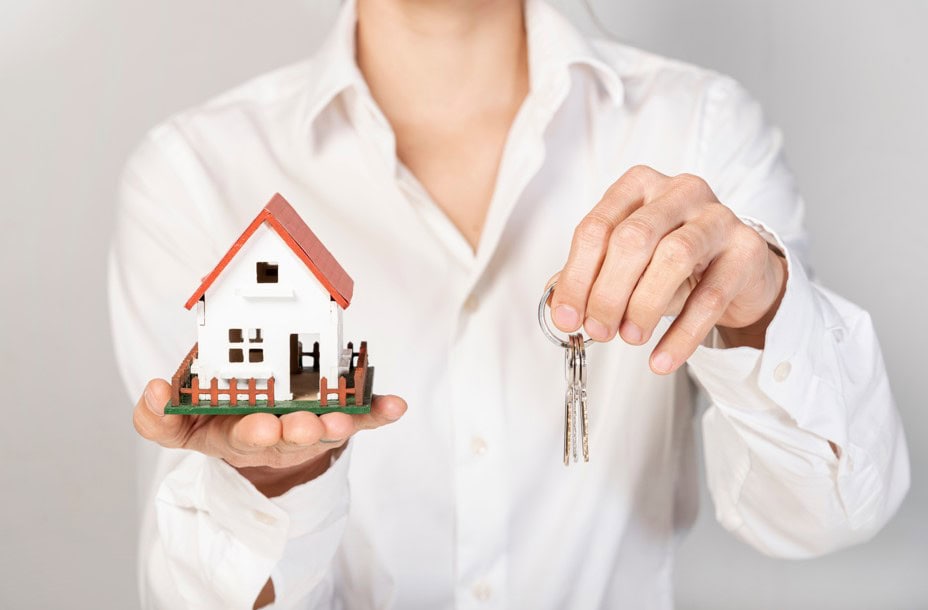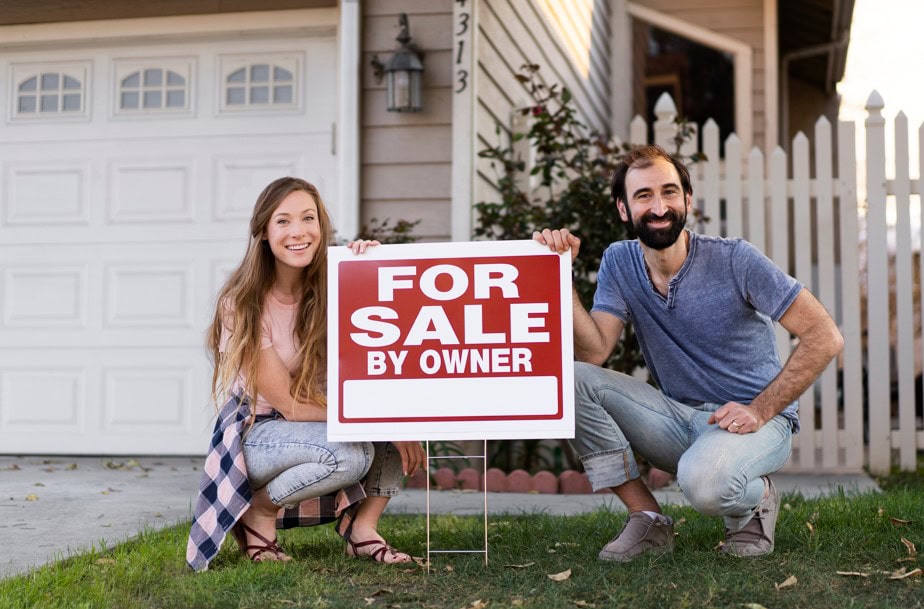When selling a house, certain issues can cause it to sit on the market longer than expected, making it unsellable. While the real estate market changes, some factors are timeless when attracting or turning buyers away. Whether it’s unpleasant smells, outdated systems, or a poor first impression, these issues can significantly impact whether or not your home sells.
In this guide, we’ll explore the most common reasons why a house becomes unsellable and practical steps to remedy these problems.
Let’s get straight to the point.
A house can become unsellable due to unpleasant odours, lack of natural light, outdated systems, or poor maintenance. To make it more marketable, ensure your home is thoroughly cleaned and brightened with lighter paint and sheer curtains and that HVAC and electrical systems are updated.
Outdated decor and neglected exteriors also deter buyers, so declutter, stage with neutral tones, and maintain the exterior. Address hidden hazards like pests or mould, avoid overly customised renovations, and price the home competitively, especially if it’s in a less desirable location.
1. Unpleasant Odours
One of the most significant dealbreakers for potential buyers is unpleasant odours. You might not notice the smells in your home because you’ve grown used to them, but they will be very noticeable to visitors. Odours from pets, cooking, or even musty carpets can be an instant turn-off.
How To Tackle Unpleasant Smells?
- Thorough cleaning: Ensure carpets, rugs, curtains, and upholstery are thoroughly cleaned. If necessary, hire a professional cleaner.
- Carpet deodorising: If you can’t wash certain items, use carpet deodorisers to neutralise odours.
- Fresh air: Open windows to let fresh air circulate throughout the house. Avoid overpowering the space with artificial air fresheners, as they can be just as off-putting as bad smells.
- Neutral environment: After cleaning, the goal is to make the house smell as neutral as possible, creating an inviting atmosphere that won’t distract buyers.
2. Lack Of Natural Light
A dark, poorly lit home can deter potential buyers. People love bright, airy spaces, and homes that lack natural light often feel smaller and less appealing. If your home feels gloomy, you must try to brighten it up.
How To Increase Natural Light?
- Repaint with lighter colours: Opt for light-coloured walls, such as white or soft pastels, which reflect natural light more effectively.
- Glossy finishes: Use a glossy or satin paint finish to make the walls reflect even more light.
- Window treatments: Replace heavy curtains with light, sheer drapes that allow natural light to pour in.
- Mirrors: Hang decorative mirrors to reflect light and create the illusion of a larger, brighter space.
- Structural improvements: If feasible, consider adding extra windows or skylights. These can significantly increase the amount of natural light, making the home feel more spacious and appealing.
3. Outdated Systems
Outdated home systems, such as heating, cooling, and electrical, can be a major red flag for potential buyers. No one wants to move into a home knowing they’ll need to spend thousands of dollars on repairs and replacements.
Systems To Check
- Heating and cooling: Make sure your HVAC system is in good condition. If it’s been neglected or isn’t working efficiently, it’s worth servicing.
- Water heater: Ensure the water heater is functioning properly, as issues can lead to high repair costs for the new owners.
- Electrical wiring: Outdated electrical systems can be dangerous and lead to increased insurance premiums. Buyers will likely be concerned if your home hasn’t been updated in decades.
Potential Costs
- HVAC servicing or replacement: A basic HVAC service may cost around AUD 300, but a full replacement could be upwards of AUD 12,000.
- Electrical updates: Minor electrical repairs cost around AUD 450, while a full house rewiring could cost anywhere from AUD 20,000.

4. Outdated Electrical Systems
Older homes often need more modern electrical systems, which can be a dealbreaker for buyers. Flickering lights, malfunctioning switches, or old fuse boxes can raise serious concerns about safety and future expenses.
How To Modernise Your Electrical System?
- Hire an electrician to inspect your electrical system and make any necessary upgrades. This could involve replacing old wiring or upgrading the fuse box to a modern circuit breaker.
- Address small repairs: Issues like faulty switches can sometimes be fixed for a relatively low cost of around AUD 450.
5. Outdated Decor
Your home’s décor may reflect your taste, but it’s important to consider what appeals to a broader range of buyers. Outdated wallpaper, old furniture, and overly personalised decor can make it difficult for potential buyers to envision themselves living in the space.
Refresh Your Home’s Look
- Declutter: Remove personal items and excess furniture to create a more open and neutral space. This allows buyers to imagine how they would decorate the home.
- Hire a stager: If your budget allows, consider hiring a professional home stager to modernise the look of your home. A basic staging could cost around AUD 700, while a full staging with rented furniture may cost AUD 7,000.
- Neutral tones: Choose neutral colours and simple, modern décor when staging your home. This will help create a blank canvas for potential buyers.
6. Poor Exterior Maintenance
First impressions are everything; a poorly maintained exterior can scare buyers away before they even step inside. Your home’s curb appeal is critical in attracting buyers, so make sure the outside of your home is in good condition.
Areas To Focus On
- Roof: Ensure your roof is in good repair. A damaged or leaking roof can be a major red flag for buyers.
- Paint: Repaint any areas of the house that have peeling or faded paint. A fresh coat of paint can make a huge difference in the overall look of your home.
- Porch and deck: Ensure stairs, railings, and decks are well-maintained. Simple repairs like fixing broken steps or staining the deck can improve the home’s appearance.
7. Hidden Hazards
Hidden dangers, such as pest infestations or mould, can turn off buyers and potentially lead to legal issues if not disclosed properly. It’s important to ensure your home is free of these hazards before putting it on the market.
How To Detect And Address Hazards?
- Pest inspections: Inspect your home for termites, rodents, or other pests. Termites can cause significant structural damage, while rodent infestations can be a health hazard.
- Mould inspections: Mould can form in areas with poor ventilation or moisture problems. Ensure any mould is properly removed and the underlying cause, such as a leak, is fixed.
Signs Of Pests Or Mould
- Termites: Look for small piles of sawdust near wooden structures, which can signify termites.
- Mould: Dark spots on walls or ceilings can indicate mould, particularly in damp areas like bathrooms or basements.
8. Overly Customised Renovations
Highly personalised renovations might appeal to you, but they could make your home less attractive to the average buyer. Unique features like themed rooms or custom-built spaces that don’t serve a broad purpose can reduce your home’s marketability.
What To Avoid?
- Overly specific themes: A home theatre designed like a movie set might seem impressive, but it’s a niche feature not all buyers will appreciate.
- Costly additions with low ROI: Certain renovations, like installing expensive solar panels or building a high-end gazebo, might not appeal to the average buyer, especially if they raise the price of the home significantly.
- Local market considerations: Remember that extravagant renovations may yield a low return if they make your home the most expensive on the block.
Budget-Conscious Updates
- Stick to updates that offer a good return on investment, such as modernising the kitchen or updating the main bathroom. Most buyers will appreciate these improvements.

9. Overpricing The Home
Even if your home is in great condition, pricing it too high can make it unsellable. Buyers today have access to a wealth of information online, so they will quickly compare your home’s price to others in the area. If your home is overpriced, it may sit on the market for months without attracting any offers.
How To Price Your Home Correctly?
- Research comparable sales: Look at recent sales of similar homes in your neighbourhood to understand what buyers are willing to pay.
- Consult multiple agents: Don’t just rely on one opinion. Speak with several real estate agents to get a balanced view of your home’s value.
- Hire an appraiser: A professional appraisal can cost between AUD 500 and AUD 700, but it is a worthwhile investment to ensure your home is priced competitively.
10. Undesirable Location
Location plays a huge role in how quickly a house sells. It can be harder to attract buyers if your home is in a less desirable area, such as near busy roads or in a neighbourhood with neglected homes. While you can’t change the location of your home, you can take steps to make it more appealing.
Overcoming Location Challenges
- Focus on maintenance: Keep your home in top condition to stand out from neighbouring properties.
- Highlight positives: If your area is improving or has convenient access to schools, shops, or transport, highlight these features.
- Competitive pricing: If location is challenging, pricing your home fairly can make it more attractive to buyers willing to compromise the area.
Conclusion
Selling a home can be challenging, but understanding and addressing the factors that make your house unsellable is key. From eliminating unpleasant smells to ensuring your home’s systems are up to date, every detail matters.
Investing in repairs, modernising your décor, and making the most of natural light can transform your property into one buyers love. Focusing on these areas and pricing your home correctly can improve your chances of a quick and successful sale.
FAQs On Home Repair
What Is The Difference Between Repairs And Alterations?
A repair is a maintenance that restores a type-certified product to “condition for safe operation.” An alteration is a maintenance that adds to or removes from the type-certified product’s configuration.
What Is The Main Purpose Of Renovation?
Renovation (also called remodelling) is the process of improving a broken, damaged, or outdated structure. Renovations are typically either commercial or residential.
Is Painting Considered Maintenance Or Repair?
Repainting the exterior of your residential rental property: The cost of painting the exterior of a building is generally a currently deductible repair expense because merely painting isn’t an improvement under the capitalisation rules.
Do You Put Hardwood Floors Under Kitchen Cabinets?
Installing flooring before your cabinets is the best choice for most hardwood floors. When professionals install floors and cabinets, getting everything to standard heights is easier. It’s also a safer installation process for your cabinets since you won’t risk damaging them as professionals install the floors.
Do You Install Baseboards Before Or After Flooring?
Baseboards are often installed before flooring, although it depends on the flooring used. The trim must be in place for carpeting, allowing the edges to be tucked under and out of sight. However, for hardwood or laminate, it is easier to install the trim after.

